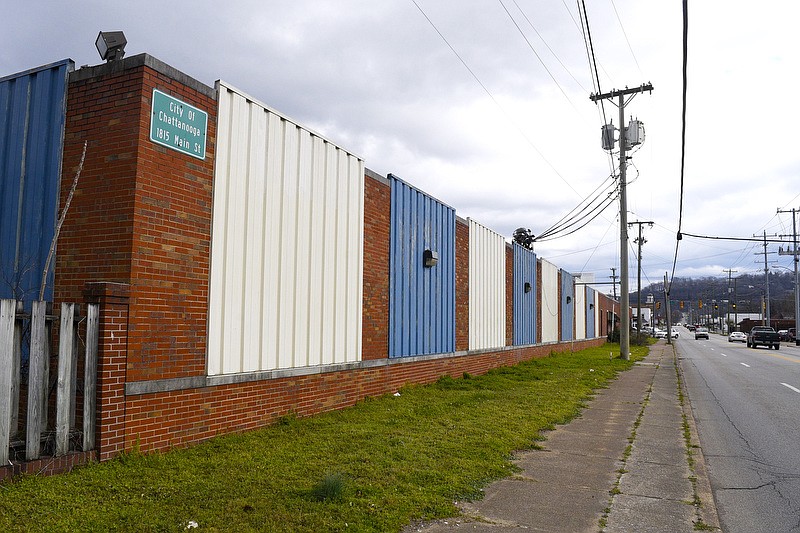The irony of complaints about the possibility of low-income residents moving onto the Main Street corridor is, at the very least, interesting.
We're thinking of the ire of some Ferger Place homeowners at a recent neighborhood meeting to discuss a proposed, 60-unit affordable housing development about a half mile away from the stately neighborhood. Of those housing units, about a quarter would be designated for low-income tenants with mental health issues.
It wasn't so long ago, though, that most of the entire Main Street corridor was a conglomeration of boarded-up buildings, low-income rental housing and industrial activity.
The once middle-class white neighborhoods of the 1910s through the 1950s on either side of Main had become integrated with black and later Hispanic families. Gradually, the majority of the white inhabitants left for the suburbs. The blocks east of Main and Market streets, once the home of thriving businesses, became rundown and filled with vacant storefronts and a fair share of undesirable tenants.
(MORE: 'That's their problem': Neighbors oppose low income housing on East Main Street)
In time, the Southside got hot, and new housing began to spring up between Interstate 24 and Main Street. The proximity to downtown couldn't be beaten, and for young and empty-nester couples the location was ideal. Eventually, Main Street was swept up in the Southside renovation, and the street once again became a thriving locale with restaurants, shops and entertainment.
To create the Southside and Main Street rejuvenations, though, it took the broom of gentrification. To generate blocks of pretty, new houses and hip businesses, wealthy buyers needed only buy up empty houses, warehouses and dilapidated two- and three-story buildings and make better offers to owners who were renting their houses to poorer residents, then develop what they wanted. The low-income residents, largely people of color who had no money to buy the houses, had no recourse but to find homes elsewhere.
One could argue that it's the right of the owner to do with a property what an owner chooses, and that is undeniably true. And it doesn't take a rocket scientist to understand that if the properties around yours improve in value, yours will too.
So Ferger Place residents, where their four-square, contemporary prairie and craftsman bungalow houses have always been a step up from the smaller houses on the outside of their gated walls, undoubtedly were ecstatic with the renaissance of Main Street. But now some worry that an affordable housing unit, together with residents with mental health issues, will - as one resident suggested - stifle the area's potential.
We're not so sure.
Sixty years ago, when Chattanooga had for the most part only segregated neighborhoods and Chattanoogans lived largely segregated lives, a development as is being suggested might be the signal to some residents that a neighborhood was about to change. Most of the residents would have assumed it would be a change for the worse and would have begun looking at places to move.
Today, when the city's businesses, schools and most of the toniest neighborhoods are integrated, such a development is not likely a death knell for all that has been revived along Main Street in the last 10 to 15 years. And it's not like the 60 units are akin to the federal public housing that was thrown up around the country in post-World War II America.
For one thing, the city of Chattanooga would be deeding the property for the development and undoubtedly would keep a close eye on what is created there. For another, the AIM Center, a 31-year-old local organization, would partner with Missouri-based supportive housing developer Vecino Group to create the $12 million project.
Before doing so, Vecino first would have to remediate the property, which has been designated as a brownfield, and it has agreed to do that. And if the final result is anything like other projects completed by the developer, it not only will be successful but attractively built to boot.
In the 2017 city elections, Mayor Andy Berke, seeking re-election, and several individuals seeking council seats talked about the lack of affordable housing west of Missionary Ridge and east of downtown. No one said the problem was simple or easily solvable.
But the city already works with the AIM Center and the Chattanooga Housing Authority to create income restricted housing, and this project would be no different, except new and better.
District 8 City Councilman Anthony Byrd, now in his first term, told Times Free Press reporter Sarah Grace Taylor he first was hesitant to support the development, then felt he needed to because of the lack of housing available for the populations that will inhabit it.
Some of the discussion in opposition, he indicated, seemed mindful of what similar discussions must have been like in the 1950s and 1960s when blacks sought to break out of the Jim Crow-enforced segregation laws then on the books.
We surely hope that mindset, now involving individuals of lower income, isn't an outgrowth of the gentrification that revived the Main Street corridor.
